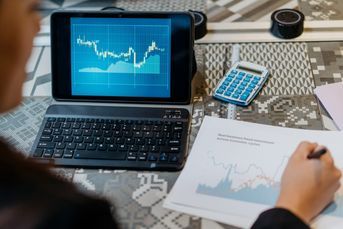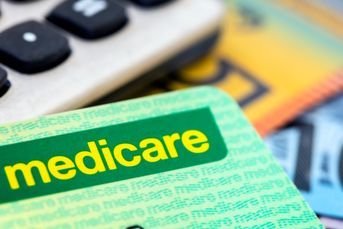Bankers want protection from greenwashing claims in $1.5T markets

Wall Street stalwarts are among the largest providers of sustainability linked loans.
Bankers servicing one of the world’s biggest ESG debt markets are now actively seeking legal protections to guard against the potential greenwashing allegations that may be ahead.
In the handful of years they’ve existed, sustainability-linked loans have mushroomed into a $1.5 trillion market. SLLs let borrowers and lenders say that a loan is tied to some environmental or social metric. But the documentation to back those claims generally isn’t available to the public, nor is the market regulated. Lawyers advising SLL bankers say the reputational risks associated with mislabeling such products are now too big to ignore.
Greg Brown, a London-based partner in Allen & Overy’s banking practice, says he’s seen a surge in clients asking for new legal clauses in SLL documentation. Such add-ons are designed to let lenders strip the “sustainability” claim from a loan. So-called declassification provisions mean bankers can just book what had been an SLL as a normal loan, should they subsequently realize the product doesn’t actually merit an environmental, social or governance label.
Rachel Richardson, head of ESG at London-based law firm Macfarlanes, says her firm’s clients are now asking for “more and more” declassification clauses.
“I would describe it as protection for lenders for greenwashing risk,” she said in an interview.
The newness of such clauses means it’s not yet clear how often clients will end up triggering them. But their introduction is an important signal.
Jamie Macpherson, senior counsel at Macfarlanes, pointed to a letter by the UK’s Financial Conduct Authority in June addressed to heads of sustainable finance. The FCA, which noted that it does “not directly regulate this part of the market,” said then that concerns around the “integrity” of some SLLs had been “corroborated by market intelligence.” As a result, “accusations of greenwashing” may follow, the FCA said.
For SLL bankers, that means “publicizing anything that you can’t back up with good robust processes is a danger from a regulatory perspective,” Macpherson said.
The SLL market is far from transparent, and not all deals can be seen in public filings. Based on data compiled by BloombergNEF, sustainability-linked loans arranged in the first three quarters of 2023 amounted to only 40% of the level seen at the same time last year, or roughly $136 billion.
Next year, meanwhile, a large number of SLL borrowers will need to get existing loans rolled over. An estimated $187 billion worth of SLLs will come due in 2024, according to data compiled by Bloomberg. More than 90% of that will be in the form of revolving credit facilities.
The most active SLL lenders are Bank of America Corp. and JPMorgan Chase & Co., according to league data compiled by Bloomberg. Representatives from both banks declined to comment.
“The real downside risk for lenders is, if you take your SLL book and you publicize to the world — or to your regulator — that you are now financing X-trillion-dollars of sustainable finance, what happens if someone then takes a ruler to that and actually delves down into what that means?” Brown said in an interview.
Lenders may not be as supportive of the sustainability-linked loan market in 2024 as they were during its peak during the 2021 to 2022 period, according to at least three senior bankers who have worked on SLLs and who asked not to be named discussing non-public information.
Aside from an overall retreat from debt markets due to higher interest rates, one banker pointed to an additional level of souring toward the SLL market that’s being driven by the arrival of regulatory scrutiny. Voluntary standard setters in the industry also are trying to catch up, which means there’ll probably be stricter guidelines in future, the banker said.
Allen & Overy’s Brown said banks were increasingly seeking additional legal protections for SLLs at the end of last year. By this year, such clauses were “starting to appear almost as standard in a lot of deals,” he said.
Regulatory scrutiny “feeds into lenders taking a closer look at their ESG-related products,” he said. “Anything that has an ESG label, we need to be a bit more careful.”
After a timid start in 2017, the SLL market took off as banks increasingly attached sustainability claims to loans, often without having to provide public documentation to back the label.
Between 2018 and 2021, the SLL market soared more than 960% to $516 billion of annual deals, according to data provided by BloombergNEF. Green bonds, the biggest ESG debt market, grew 250% in the same period to just over $640 billion worth of annual deals. As of last year, there was no ESG debt market bigger than SLLs, except for green bonds.
The SLL bankers Bloomberg spoke with raised concerns that some of the deals crossing their desks had questionable sustainability credentials. Some of the deals were rejected, but some were accepted for commercial reasons, they said.
They cited examples in which borrowers set themselves softer emissions reduction targets than their current net zero trajectory implied. And borrowers would allow themselves several years to meet such goals.
Examples given by the bankers include rejecting SLL pitches with health and safety targets, as these were often little more than a promise to uphold the absolute minimum requirements needed to avoid work-related injuries. In another example, a coal company seeking an SLL wanted the environmental targets to cover just 5% of its emissions. The loan was rejected by western banks, but ultimately taken on by lenders in the company’s local market who were joined by Chinese banks.
Another banker spoke of deals in which key performance indicators were set to sustainability targets that never represented a realistic ESG risk in the first place.
The UK’s FCA has itself documented examples of potential greenwashing. In its June letter to sustainable finance heads, it noted that of the 250 SLL transactions done by one market participant in 2022, “only 30% were deemed ‘fit for purpose.’”
The FCA said it also “noted a general sentiment among banks that the ‘relationship’ may matter more than the borrower’s sustainability credentials.”
Grace Osborne, an analyst at Bloomberg Intelligence, describes the SLL market as “opaque,” which “makes measuring impact a substantial challenge.”
As a result, growing concern that such products are being used “as marketing tools for banks and a means to achieve sustainable-finance targets may create regulatory and reputation risk,” she said.
In the smaller but more transparent sustainability-linked bond market, the International Capital Market Association has set guidelines to protect investors from greenwashing that specifically require issuers to set key performance indicators that are relevant to their industry.
This year, the Loan Market Association published updated voluntary principles for SLLs. Borrowers and their banks are supposed to make sure that key performance indicators are actually “relevant, core and material.” KPIs also should be “measurable or quantifiable,” and possible to compare with a benchmark, the LMA said. And borrowers “are encouraged” to publicly report the extent to which they’re meeting targets. Crucially, external verification is required, according to the LMA’s updated principles, which only apply to deals struck after March 9 of this year.
“SLLs have seen meteoric growth since their inception in 2017 and, as such, market practice is in a constant state of evolution,” the LMA said in May. “Much like the SLL product itself, it is intended that these model provisions shall evolve in line with the market.”
In its June letter, the FCA said the SLL market “provides a useful transition finance tool” if done right. The regulator added that it now hopes “to encourage industry-led action that will help the market for SLLs scale with integrity.”
Learn more about reprints and licensing for this article.








